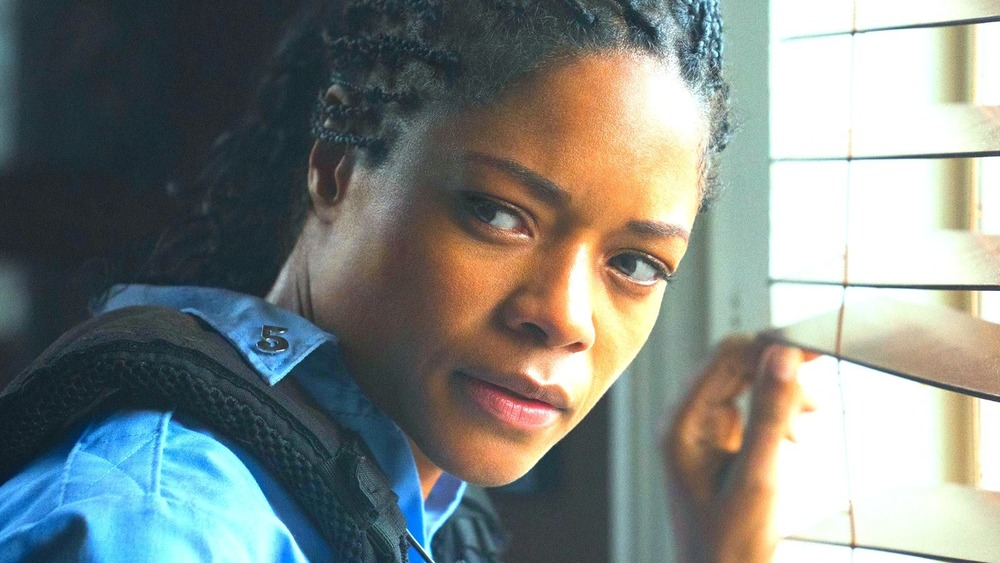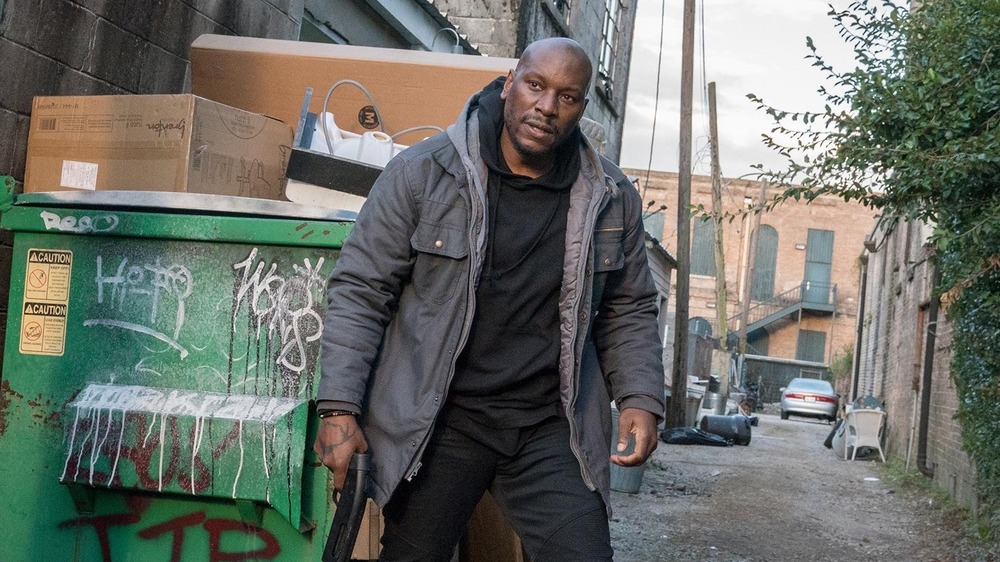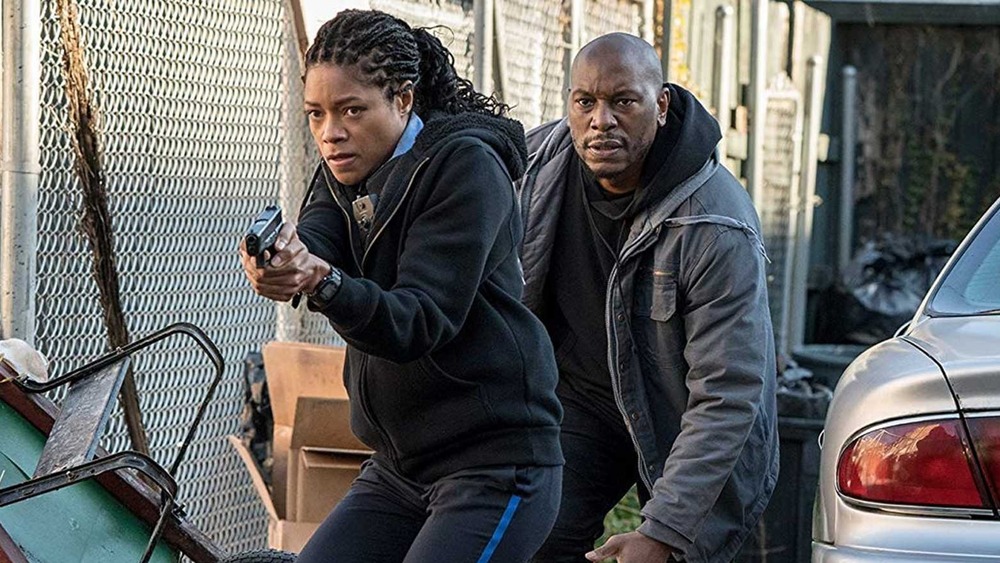The Ending Of Black And Blue Explained
In Black and Blue, Deon Taylor tells a story about police brutality through the eyes of Alicia West (Naomie Harris), a New Orleans police officer that witnesses it firsthand. In the process, the film addresses injustices that are all-too familiar to far too many people in the United States — albeit, through a fictional lens. At the heart of the story is a tension between the police department and the community it serves — and that theme carries throughout the film, driving many of the pivotal plot points.
A film like Black and Blue has the unique challenge of translating real world issues into a fictional story. In the process, it makes room for multiple perspectives — those of the community members who've been wronged, and the police officers that want to help them. These driving narrative factors — the quest for truth and justice — culminate in a tense final encounter that has symbolic implications. Let's take a look at what happens at the end of Black and Blue, but please remember, there will be spoilers ahead.
In Black and Blue, Alicia West accidentally witnesses police brutally firsthand
As a U.S. Army veteran, Alicia West finds herself at a bit of a crossroads when she returns home to New Orleans. After joining the police force there, she's reminded by her partner, Kevin Jennings (Reid Scott) that there's an inherent distrust between their department and the predominantly Black community they will be policing. Alicia quickly understands why, after she witnesses Detective Terry Malone (Frank Grillo) murder an unarmed suspect, and then tries to cover his crime up.
After Malone realizes that Alicia's body camera captured evidence of the murder, he and his men make it clear they'd rather kill her or frame her for the murder than be held accountable for their actions. Alicia is forced to flee, and ends up taking refuge with business owner Milo Jennings (Tyrese Gibson), who reluctantly agrees to help her.
Alicia is then at a crossroads of another kind, and as she navigates an increasingly dangerous fight for her life, the bulk of Black and Blue sees Alicia grappling with two separate, but equally important objectives: getting her body cam footage to safety, and staying alive so she can clear her name and bring Malone to justice.
Luckily, she succeeds at both tasks. Milo sneaks into the police department and uploads the footage. Malone catches up to Alicia, and the two engage in a tense parking lot standoff, with many members of the community looking on. After a dispatcher who witnesses the footage at the police department announces to the officers that Alicia is innocent, Malone attempts to kill her one last time, before Jennings shoots him in the chest.
Black and Blue leaves its characters with a small sense of hope and justice
Black and Blue ends as happily as any story like this can: because she and Milo worked so hard to make Malone's crimes known and create some semblance of justice, she won the trust of both the community and the NOPD. In the film's final moments, she and Milo visit her mother's grave, and she expresses gratitude for him saving her life, before they leave together, symbolically signaling a longer-term partnership between the police and the community.
Throughout the film, and especially at the end, Black and Blue shines a timely light on the injustices at the hands of police officers — and showing us the worst (Malone) and the best (Alicia) of how it can be handled. Through Alicia's perspective, we are able to understand the complexities of the relationship between the police and their communities. The fact that she survives and exposes the injustices she witnessed leaves hope for progress, at least in the fictional world of Black and Blue.


